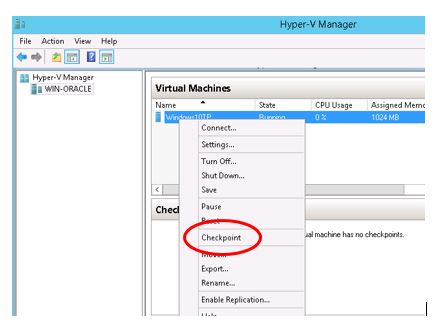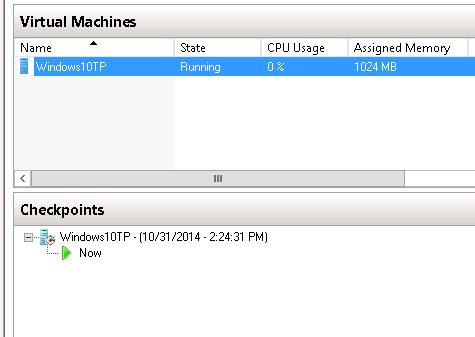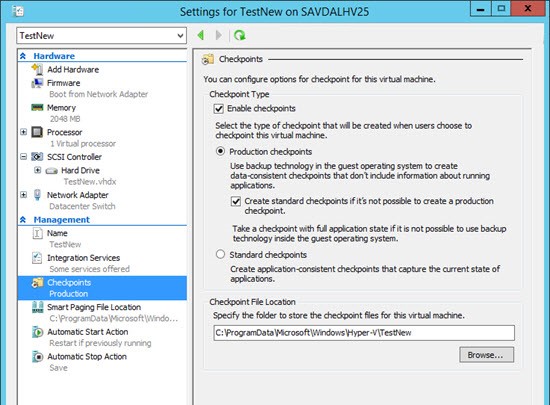What are Hyper-V checkpoints?
Windows Hyper-V technology has included the ability to create checkpoints for VMs since Hyper-V 2012 R2. These checkpoints use saved state technology to create a point-in-time that a VM may be reverted to in the event of some corruption or otherwise undesirable state. The process is fairly simple and includes right-clicking on a VM and selecting Checkpoint:

Once the VM checkpoint has been created, you see it listed in the Checkpoints pane in Hyper-V Manager:

While checkpoints in Hyper-v 2012 R2 do point-in-time capture the VMs storage and memory state, they do not provide consistency within the file systems or applications running in the VM. The guest has no knowledge of the saved-state, and thus reverting to a given checkpoint could possibly include data or file system corruption. The savvy administrator could manually quiesce applications and force buffer flushes, but this is inconvenient at the least and is not typically manageable or desired.
Windows 10 and the Server Technical Preview have introduced Production Checkpoints:

Production Checkpoints take the initial checkpoint feature a step further and actually leverage the VSS (Volume Shadow-copy Service) interface running inside Windows VMs to quiesce VSS-aware applications and Windows file systems. This means that when a VM is reverted to a Production Checkpoint, it will be application consistent, file system consistent and crash consistent.
In addition to Windows VMs, Production Checkpoints are available for Linux guests as well. Since there is no VSS interface for Linux, Production Checkpoints leverage the Linux integration services to flush file system buffer writes so that Linux applications and file systems will also be consistent.
This new functionality is a huge advancement for backup, recovery and replication technology and provides Hyper-V admins much better tools for managing their environments.

